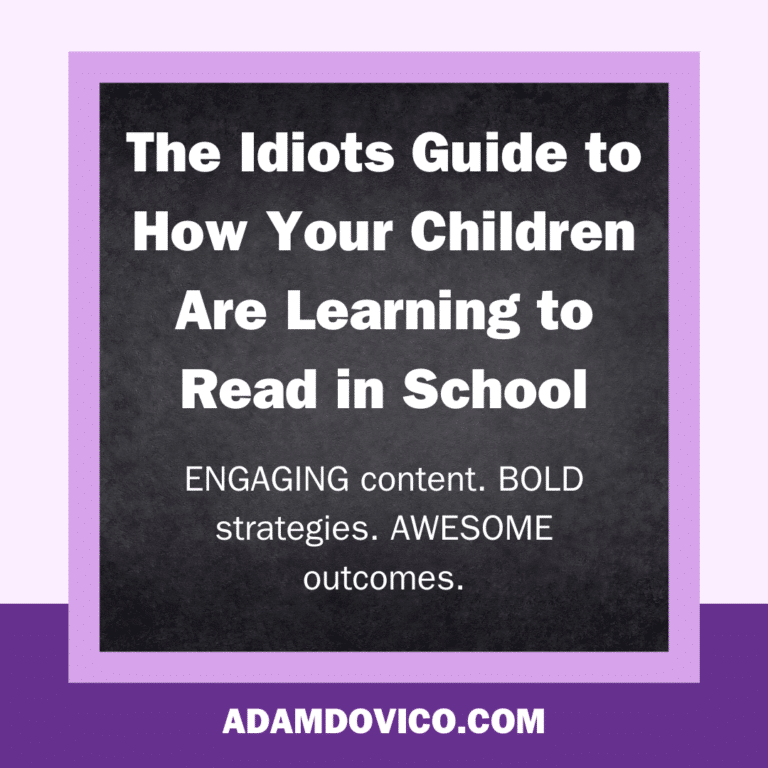Your Big Bag of Tricks
According to the National Comprehension Center for Teacher Quality, do you know what new teachers identify as the primary reason for problems with classroom management?
It has nothing to do with where you teach, who you teach, or what grade you teach.
An overwhelming majority state lack of preparation from undergraduate courses and professional development opportunities as the primary cause for classroom management issues.
This is not surprising if you think about it. In college, your courses typically consist of educational foundations, several content courses, possibly an ed pysch class, and then some electives within the major. Rarely have I come across undergraduate courses that truly focus on the reason so many teachers go home frustrated at night and leave the profession, classroom management.
When it comes to professional development, I have sat through a number of workshops over the years that guarantee good citizenship and behavior if you go through their step-by-step laden notebook that has the kids color pages of kids being nice to each other. Somehow this will suddenly make a rambunctious 5th grader behave? I don’t think so. Sadly, these are being presented by people who have not been inside a classroom for 20 years and can barely manage the workshop they are presenting, let along a class of 30 kids.
As I have traveled into classrooms over the past two months, I have had teachers warn me before I begin my observation that they have “a tough class.” “It’s just one of those classes” is what I hear quite often. When I go in and begin to watch, the teacher is usually absolutely right! They are wild! But nine times out of ten it is because the students are disengaged, so they find their own ways to engage themselves, which is usually through talking, getting out of their seat, and horsing around.
There is no doubt in my mind that classroom management is directly correlated to student engagement. It’s quite simple. The teachers who engage their students effectively are not having the same issues as those that do not engage their students effectively. Think about it, isn’t it human nature to pay more attention to something that appears to be either interesting or fun?
Notice, I did use the word effectively above. I have had many teachers who believe that they are engaging their students effectively, but it just ain’t happening. I see this particularly in classes with fairly well behaved children. Because the kids are in their seats and following directions, the teachers thinks they are engaged. I call it passive engagement. When I am in classrooms, I am looking for active engagement, where the kids are sitting on the edge of their seat waiting to see what is to come next.
Look, the blame cannot go solely on the teacher though. The problem is that so many teachers get trapped inside of their own classrooms for 30 years. Rarely do teachers get to travel outside of their four walls and observe what co-workers are doing or have meaningful conversations or feedback on their methods.
When it comes to student engagement, it is not a one method cure all. You need a bag of tricks. A big bag. What is cool and fun one moment becomes antiquated the next. Blame it on what you will, but it’s the reality.
As a first year teacher, I was teaching reading and wanted to use an idea I picked up in college to conduct my questioning. I took a beach ball, wrote different questions on it (though I look back now and want to kick myself for having all low level questions on it), and we would toss the ball around and where ever your right thumb landed that was the question you answered. It was a blast when we did it! The kids loved being able to toss the ball around and see where their thumb landed. I was so excited, I thought I had found my reading comprehension activity for the rest of the year. Well … it didn’t even get me through the week. The kids were bored with it after a second day. We need that big bag of tricks, and as a first year teacher, I was scrounging at the ocean floor to find new ones.
When I meet with administrators, there are two things I advocate for:
1) Schedule frequent, purposeful peer observations for staff to watch each other. This allows teachers to get new ideas and appreciate different styles. It elicits valuable conversations and provides constructive feedback. It also keeps the kids on their toes too, because they never know who is going to be watching!
2) Design opportunities to share. This may happen during staff meetings or professional days, but people need to share great ideas. This can go hand in hand with number one, but either way, we always need to build our bag of tricks, and designing ways to share these ideas is valuable.
The RCA Facebook page recently put up a question to teachers to share the best student engagement techniques they use. I read through them and summarized them below. I also put some links or ideas along with some of them as FYI. I hope you find some cool ideas that you can add to your bag of tricks to engage your students:
- Having a sense of humor (number one response from teachers)
- Building up anticipation for a lesson
- Kagan strategies
- Speaking in accents or funny voices
- Music
- Cliffhangers to lessons
- High energy/movement
- Personal stories/pictures
- Costumes (see my previous post for some of my former costumes)
- Learning games
- Candy/incentives
- Integrating art
- Songs/raps (here’s a song for Black History Month I did with my 5th graders)
- Acting/drama
- Integrating media/technology
- Frequent use of questioning
- Brain breaks (here is a cool one I saw done in a classroom to a dance from Ice Age)
- Telling them that you care
- Competition
- Debate (see picture below for the debate championship I used in my class)
- Stickers
This is just the tip of the iceberg for engagement techniques, and I have seen some great ones in person as I’ve traveled around, but this is a start, especially for young teachers looking to build up techniques.
Remember, as a rule of thumb, you want to “manage through your teaching,” and not “teach through management.”
-AD









